#amelia de la torre
Explore tagged Tumblr posts
Text
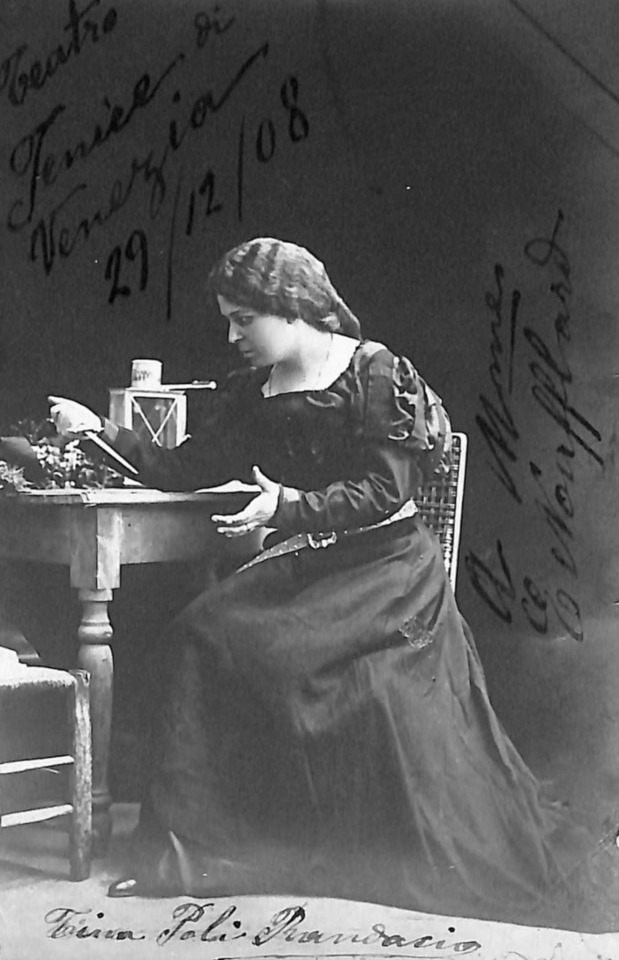
Ernestina Poli was born in Ferrara, Italy on 3 April 1879, and she studied for only a few years before making her debut at Bergamo in 1902 as Amelia in Un Ballo in Maschera. She had a huge success and was retained for another dozen performances in Il Trovatore and the then very popular Salvator Rosa. She ended the year at Massa. At this point, despite her success, she retreated from the stage for another year of training, after which she debuted at Messina in Andrea Chenier with the tenor Ruggero Randaccio. On 17 Jan, 1904 she sang Micaela for the only time in her career, again with Randaccio as her stage partner. It was not long before the couple announced that they were to be joined in life, and in the summer of 1904, shortly before a tour to South America, they were married. She immediately changed her stage name to Tina Poli Randaccio, and there are interesting and amusing confusions in some South American reviews during the tour of 1904, in which she is listed as the tenor, he the soprano. Poli was assumed to be his first name and Ruggera, hers.
The tour took the couple to Sao Paolo and Rio de Janeiro where Tina appeared as Mimi, the Trovatore Leonora, Desdemona, Aida, Maddalena di Coigny, Gioconda and Santuzza. He sang in Boheme, Andrea Chenier and Cavalleria Rusticana. The year ended at Sao Paolo with an opera called Cristo alla Festa di Purim, after which she added La Forza del Destino, Ballo in Maschera and Ernani to her assignments in Brazil. The couple traveled with the company to Manaus and Pernambuco, then returned to Europe where Ruggero announced his retirement from the stage. They decided that he would be her manager and coach, and from about this point his name was never seen on a billboard again.
On 2 December 1904 Tina debuted at Milan's Teatro Dal Verme in an opera called Jana with Bergamasco and Schiavazzi conducted by Serafin and from there she went to Oporto where she sang in Aida, Il Trovatore, Don Carlo, Pagliacci, Un Ballo in Maschera and Cavalleria Rusticana. After a short respite, the couple sailed for Mexico, and in September 1905 Tina appeared at the capitol in Les Huguenots (in Italian), Aida, Germania, Un Ballo in Maschera and Giordano's recently produced opera Siberia. The company included Virginia Guerrini, Alice Zeppilli, De Marchi and Magini Coletti, and it is not surprising, given those names, that the tour extended for four months and included visits to Guadalajara.
Turin welcomed her back to Italy when she appeared at the Teatro Vittorio Emanuele as Gioconda in January of 1907. A tour to Bucharest was arranged by Randaccio and on 11 November Tina debuted as Aida in a cast that included De Angelo, Angioletti and Bellat. On the 18th, she sang in Ernani with Angioletti, Titta Ruffo and Torres de Luna. Her season continued into the middle of December with Un Ballo in Maschera and Il Trovatore, both with Ruffo, Les Huguenots, and La Gioconda. A visit was made to Kiev and Odessa, but I have no record of her roles.
Tina debuted at Parma's Teatro Regio on 6 January 1908 in Mascagni's brand new opera, Amica and after singing in Red Roses and Damnation of Faust, she undertook a four month tour of Italy with the new work, under Mascagni's direction. The cities visited included, Firenze, Bologna, Modena, Verona, Treviso, Trieste, Ravenna, Ancona, Cesena and Forli, where she received a thunderous welcome and was hailed as the greatest soprano seen there in a generation. At Livorno she sang in the composer's Le Maschere and Iris and the tour ended at Rome's Teatro Adriano, where Tina sang eleven performances of Amica and several of Le Maschere, the latter with Juanita Caracciolo and Carlo Galeffi.
On 26 December, Tina made a much heralded debut at Venice's Teatro la Fenice as Aida with Ladislava Hotkowska and Henderson. The revival was so well received that a scheduled three performances became six. At Fiume, in April, she sang in Ernani and La Gioconda and in October she returned to the Adriano for Tosca, Aida and the world premiere of Raffaelo,by De Lunghi.
In February 1910 Tina debuted at Madrid's Teatro Real as Gioconda in a cast that included Flora Perini, Giuseppe Taccani and Ruffo, after which she sang ten performances of Aida and six of Loreley at Catania's Masimo Bellini. The spring found the Randaccios back in Brazil, where, at Rio de Janeiro, on 27 May, Tina sang Isolde for the only time in her career, though it was a moderate, if not overwhelming success. At Rio, she also sang in Il Trovatore, La Gioconda, Loreley, Tosca, Aida, and Germania, and at Sao Paolo, she added another new work, Boscaiuola. Tina's tour partners included Anna Gramegna, Krismer, Giraldoni and Viglione-Borghese, and, as had been the case in Mexico, this starry roster resulted in an extended season both in Rio and in Sao Paolo.
The most important moment of her career had arrived. On 17 December 1910 Tina debuted at La Scala as the Siegfried Brunnhilde, with the inimitable Giuseppe Borgatti in the title role. There were a dozen performances, and the production was a complete success. Fanny Anitua was an unforgettable Erda according to contemporary reviews, and the hero and heroine received memorable ovations every evening. Though hers would not be a major career in the most important of all Italian theaters, it continued at intervals for a good number of years, and included several world premiers.
In February 1911 Tina returned to Parma for La Gioconda and then took a well needed break from performing. During the summer, she learned the role of Minnie in La Fanciulla del West, and on 10 September, at Puccini's invitation, she sang the first of thirteen performances at Lucca's Teatro del Giglio with Taccani as Dick Johnson. Her success was enormous, in fact, greater than her predecessor, Eugenia Burzio, who had sung in the Italian premiere earlier in the season. Poli was immediately engaged to repeat the opera at Naples' San Carlo with Martinelli and Viglione-Borghese and at Bari's Teatro Petruzzelli with Corti and Mariano Stabile. After a debut at Palermo's Massimo as Gioconda in March 1912, she sang Minnie at Monte Carlo, again with Martinelli and Viglione-Borghese, and in late May she debuted at the Paris Opera as Minnie in a gala performance with Enrico Caruso.
In November, Tina sang in La Gioconda at Genoa and then prepared for the Scala premiere of Fanciulla. There were many sopranos who had vied for the honor, whose partisans had lobbied intensely for them, and the uncertainty had been a major story in Italian newspapers. Burzio reigned at Scala, but it was not to be. Tina's reputation as Minnie was by now so secure that both Scala's management and the composer agreed that she deserved the honor. On 29 December, before a star studded audience, the Milan theater presented La Fanciulla del West for the first time with Poli Randaccio, Martinelli and Galeffi. Tullio Serafin was on the podium, and the clamor was so enormous that the opera was repeated fourteen times.
Tina repeated Minnie at Monte Carlo in February 1913 with Martinelli and George Baklanov, after which she sang the role at the site of its Italian premiere, the Costanzi of Rome. In the spring there were concerts at Modena in honor of the centenary of Verdi's birth and on 15 December, Tina sang in the world premiere of Mascagni's Parisina at La Scala under the composer's baton. The cast included Luisa Garibaldi, Hipolito Lazaro and Galeffi, and there were twelve performances.
On 10 February 1914 Poli sang in the world premiere of Smareglia's Abisso and on 2 April in the world premiere of Alfano's Ombra di Don Giovanni, both at La Scala. In May she sang in Tosca at Milan's Teatro Carcano with Garbin and Viglione-Borghese and in October Tina participated in one of this century's most important stage debuts, that of Beniamino Gigli as Enzo, at Rovigo, on 15 October. It was the scene of veritable riots; a star had truly been born, and there were thirteen performances. Tina's year ended with Un Ballo in Maschera at Piacenza, a revival shared with the equally celebrated Celestina Boninsegna.
Rome's Costanzi welcomed Tina back as Gioconda, Tosca and Minnie in the winter of 1915, and after Gioconda at Naples and Aida at Firenze, she sailed for South America and her debut at the Teatro Colon of Buenos Aires. On 25 May, Poli debuted as Gioconda in a cast that included Perini, Lazaro, and Riccardo Stracciari. La Prensa referred to her as "a major talent whose voice can send shivers down one's spine, so present and immediate is the reaction". On 6 June she sang Santuzza and on the 17th, she sang in a concert with Caruso, Bernardo de Muro, Mario Sammarco and Lazaro. The season ended with Tosca and had included performances with the company at Cordoba and Rosario, where she sang Tosca and Santuzza, and at Tucuman, where she sang Santuzza.
Tina traveled from Argentina to Santiago, Chile, and on 27 August, she opened the season at the Teatro Municipal in La Fanciulla del West. The work was so well received that an additional performance was added; it was the only opera to be seen as many as four times. She stayed at Santiago for two months, singing Tosca, Aida, Gioconda, Santuzza, the Trovatore Leonora and Maddalena di Coigny and appeared as Aida, Tosca, Gioconda and the Trovatore Leonora at Valparaiso. Tina returned to Buenos Aires in late October where, at the Teatro Coliseo, she sang all of her Chilean roles except for Maddalena, and after a brief rest, she undertook a long tour of the Caribbean Basin. World War I was in its most intense period and the safety of the Western Hemisphere certainly seemed more attractive than the dangers of Europe.
On 29 January 1916 Tina debuted at Havana as Aida, and later sang in Tosca, Il Trovatore, Cavalleria Rusticana, Iris, La Gioconda, Les Huguenots, and La Fanciulla del West. Her tenor partners were Lazaro and Zinoviev; Enrico Roggio carried most of the baritone weight and Amelita Galli-Curci appeared with Poli in Les Huguenots (in Italian). The company stayed at the Cuban capitol for nearly two months, then toured to Cienfuegos, Camaguey, Santiago de Cuba, Mananzas and in the late spring, to Costa Rica.
In November Tina returned to Italy for Tosca at Bologna with Aureliano Pertile and Jose Segura-Tallien and in January 1917 she sang at Milan's Dal Verme in a gala concert, including act 3 of Aida and act 4 of La Gioconda. At La Spezia she sang Aida, and in June Tina debuted at Zurich as Tosca with Gubellini and Sammarco. After singing Santuzza at the Swiss theater, she returned to the Dal Verme for Aida and at Genoa, she sang in La Gioconda with Vita Ferluga, Folco-Bottaro and Galeffi.
Tina decided that the climate in Europe was not what the doctor ordered, and in fact, work was difficult to find for nearly everyone in 1917. Many of Italy's most important theaters were closed, and those that remained open presented very shortened seasons. Havana again beckoned and Tina returned in December for Aida, La Fanciulla del West, Les Huguenots, Tosca, La Gioconda, L'Africaine, La Boheme and a new opera, Doreya. Her colleagues included the tenor, Jose Palet, Edith Mason, Maria Barrientos and the basses, Nicoletti-Korman and Virgilio Lazzari. The tour again included Camaguey, Cienfuegos and Santiago. In mid March 1918, the company moved to San Juan and Ponce for a two month season in Puerto Rico. Poli sang the same roles and added Amelia in Un Ballo in Maschera. In June, at Caracas, Venezuela she sang in Aida, Tosca, Les Huguenots, La Gioconda and Cavalleria Rusticana.
The Great War was over and Tina returned to the safety of a victorious Italy for La Gioconda at Bologna, Milan's Teatro Lirico and Firenze's La Pergola. On 18 December she reappeared in glory for the first of eleven performances of Aida at La Scala. The next few months were spent at Turin with Cavalleria Rusticana and Aida. It was during the revival of Aida that Tancredi Pasero made his absolute opera debut as Il Re, substituting for an indisposed colleague. It is with some pride that the author acknowledges this event, since Pasero's debut has always been listed as at Vicenza in La Sonnambula much later in the year. And with pleasure, I also acknowledge that this information was kindly provided by Robert Tuggle of the Metropolitan Opera Archives.
After La Fanciulla del West at Trieste's Teatro Rossetti, in late November, Tina debuted as Aida at Barcelona's Liceo and in December she completed her engagement as Gioconda. In January 1920 Tina sang thirteen performances of Aida at Trieste's Teatro Verdi with the stellar cast of Giuseppina Zinetti, Miguel Fleta and Carmelo Maugeri. Rome's Costanzi welcomed Poli back with seven performances of La Gioconda and Genoa saw her as Santuzza in March. May was spent at the Fenice of Venice, where Tina sang in Suor Angelica with Elvira Casazza and in Aida. In June, she traveled to London for a debut at Covent Garden in Tosca with Fernand Ansseau and Dinh Ghilly and was very poorly received by both public and press who recoiled from her strong vibrato and melodramatic impersonations. Tina left London after one performance, never to return.
However, on 31 July she was welcomed with an enormous ovation at the Verona Arena when she sang in Aida with Zinetti and Pertile. After La Gioconda at Turin's Teatro Chiarella, Tina returned for a very long season at Barcelona, appearing in Aida, La Gioconda, Un Ballo in Maschera, Lucrezia Borgia, Cavalleria Rusticana and Ernani, as well as in act two of Tosca during a gala benefit. Her reviews were nothing short of magnificent and in Gioconda, she was heralded by several critics as the greatest that the city had ever seen or heard. The Liceo and Tina Poli Randaccio would continue their love affair over several more seasons.
In 1921, Tina appeared at Brescia and Trieste for La Gioconda, Palermo for La Gioconda and La Fanciulla del West, Rome for Aida, the Milan Arena for La Gioconda, Vicenza for La Fanciulla del West with Ismaele Voltolini and Stabile, Venice for La Gioconda and at Parma on 29 December in a stellar revival of the Ponchielli work with Giannina Arangi Lombardi as Laura, Irene Minghini Cattaneo as La Cieca, Voltolini as Enzo, Noto as Barnaba and Bruno Carmassi as Alvise.
The new year found her in revivals of La Fanciulla del West at Naples, Milan's Carcano and at Turin where she was joined by Voltolini and Apollo Granforte. The Dal Verme hosted Tina in Il Trovatore with Zinetti, John O'Sullivan and Benvenuto Franci in October, and after eleven performances of Les Huguenots at Bologna with O'Sullivan, Poli returned to Barcelona for Aida with Aurora Buades and Lazaro, Tosca with Lazaro and Les Huguenots with Cassini and Lazaro.
Tina debuted at Cairo on 27 January 1923 as Gioconda and continued her season as Minnie and Santuzza, after which she repeated all three roles at Alexandria. Santuzza was the role of her return to Milan's Teatro Lirico in May and on 11 August she appeared at Venice's Lido di San Nicola in Aida with the riveting Gabriella Besanzoni. In November, Trieste saw Poli as Gioconda and on the 22nd, she sang in a gala performance of Aida at Rome's Costanzi in honor of the King and Queen of Spain. Zinetti, De Muro and Enrico Molinari completed the stellar cast and the conductor was Mascagni. Tina's year ended at Mantua with four performances of Tosca, after which she appeared at Brescia's Teatro Grande in Loreley. Neapolitan audiences appreciated her Trovatore Leonora and Romans admired her in L'Africaine with Pasini, Giulio Crimi, Molinari and Pasero and in Tosca with Crimi and Stracciari.
In the summer Tina debuted at Vienna as Aida with Maria Gay, Giovanni Zenatello and Viglione-Borghese, a revival that had to be repeated sixteeen times before moving to Kaiserdam, Germany in September. Berlin saw her Santuzza before she returned to Barcelona in November for another daunting season. This time Tina sang in Aida, Les Huguenots, L'Africaine and a new work, Suor Beatrice. Though Tina Poli Randaccio is primarily remembered in Italy as the quintessential Italian dramatic soprano, she had by now appeared in twenty countries, and with the singular exception of England, had been rapturously received in all. There would be a twenty first.
1925 began at Naples with L'Africaine and on 30 January, Tina returned to the Costanzi for La Fanciulla del West with Crimi and Parvis. After further performances of Tosca and Aida at the San Carlo in February, she returned to Rome for Il Trovatore and Aida. The Lido di San Nicola at Venice feted Tina to a serata di gala on 1 August as the prelude to an engagement as Aida at the Fenice, after which she sang in Tosca at Rimini with Pertile and Viglione-Borghese. In October, she returned to Genoa for La Gioconda, and on Christmas Night 1925, at Bari's Teatro Piccinni, she sang Norma for the first time. Though she sang six performances, it was not a great critical success, and she decided to drop plans for several other planned engagements in the role.
Trieste's Teatro Verdi hosted Tina in Abisso and Il Trovatore at the outset of 1926, after which she sang in La Fanciulla del West at Genoa's Carlo Felice, in Aida and a Benefit Concert at Rome's Costanzi, and in Il Trovatore at Naples' San Carlo, the last with Ebe Stignani. Poli had been singing for a quarter century and it had been an enormously intense and successful twenty five years, but Father Time, as he will, began to play his inevitable role. After Naples, it was not until September that Tina again appeared on a stage, when she debuted at the Athens Arena in Aida with Franco Battaglia. And so, her year ended.
La Scala beckoned one more time, and, on 9 March 1927, Tina sang in the world premiere of Guarino's Madame de Challant with Francesco Merli and Carlo Morelli, and with these three performances she said farewell to the theater that had presented her as its first Minnie, and in four world premieres.
Naples again welcomed Tina for Il Trovatore and Aida, and she debuted at Modena's Teatro Comunale in April as Gioconda, and, a week later she unveiled the role of Turandot at the Comunale. At Milan's Carcano she sang in Isabeau and at year's end she returned to Barcelona for the last time, appearing in Aida and La Gioconda, with identical casts, Zinetti, Aroldo Lindi, Granforte and Vela.
In February of 1928 Tina sang in Turandot at the San Carlo and in February, she bade farewell to Naples as Gioconda. In April she returned to Rome, where, at the newly named Teatro Reale, she sang for the last time, when she appeared in Il Trovatore. Her last engagement of 1928 was as Isabeau at Livorno in a revival conducted by Mascagni.
In 1929, Tina sang Gioconda and Santuzza at Milan's Lirico, Turandot at Nice, which is listed in the program as the French premiere of the Puccini opera, Aida at La Spezia and Tosca at Firenze's Teatro Verdi. In 1930, her only Italian engagements were at Genoa where she sang Isabeau, Aida, and Santuzza, after which she sailed to Caracas for a season as Gioconda, Tosca, Maddalena di Coigny, Santuzza and Elena in Mefistofele. There would be no further engagements outside of Italy, and few enough in her homeland though she continued to appear for another six years.
In 1931, she sang Santuzza at Bergamo, Gioconda for Italian Radio both at Rome and Turin, Gioconda in Palermo's Teatro Garibaldi, Nedda at Isola, and Aida at Biela and at Rome's Teatro Adriano. In 1932 she sang in Gioconda at Crema and in Tosca at Milan's Teatro Puccini and at Brescia. 1933 found her again at the Puccini for Isabeau, at the Adriano for Minnie and Aida, and at Milan's Politeama for Santuzza.
In 1934 she returned to Norma, which had played so minor a role in her career, and she sang it at both Monza and the Lido of Pesaro. At Pesaro she also sang Santuzza, a role repeated at Milan's Arena. At year's end she sang Aida at Milan's Nazionale and at the Puccini she sang in La Forza del Destino, a role repeated at Foggia in early 1935. At Foggia she also sang Santuzza. The end came in early 1936, where at Asti and finally at Modena Tina Poli Randaccio sang her opera farwell as Santuzza. The career had encompassed nearly fifty roles, and had presented her on the stages of the World over fifteen hundred times, a monumental parade of memories for nearly two generations of opera goers.
After retiring from the stage, Tina abandoned musical life almost entirely, and died at Milan on 10 February 1956.
#classical music#opera#music history#bel canto#composer#classical composer#aria#classical studies#maestro#chest voice#Tina Poli Randaccio#dramatic soprano#soprano#classical musician#classical musicians#classical voice#classical history#classical#La Scala#Paris Opera#musician#musicians#history of music#historian of music#music education#music theory#diva#prima donna
3 notes
·
View notes
Text
RETO LECTOR 2024 - Libro 48 - Aviadora: Una Historia de Sueños en la España de los 60
30 de Noviembre 2024 - Un nuevo sábado, y nuevo libro: "Aviadora" de Virginia Llera. Una historia, con toques históricos que remueve muchos sentimientos...
Madrid, 1966, bienvenidos a la aventura epica de un ama de casa que quiere ser AVIADORA Una novela tan real como la vida misma Amelia Torres es un ama de casa que está a punto de ganar La mujer ideal, el concurso de televisión del momento. Lo que está en juego es un suculento premio que puede cambiar su vida… y la de su marido Armando, que quiere comprarse un apartamento en Torremolinos…, y la…
0 notes
Text
Fre4k y Hank caminaban por el bosque cercano a la cabaña que el Group of Light había construido como su base. Era un lugar tranquilo y seguro, rodeado de altos muros de piedra y madera que ellos mismos habían levantado tras días de arduo trabajo en equipo. Hope y Amelia se habían quedado en la cabaña para descansar y organizar algunas provisiones, mientras que Fre4k y Hank decidieron salir a explorar un poco más allá del perímetro.
El ambiente era sereno, con el canto de los pájaros y el crujido de las hojas bajo sus pies como los únicos sonidos en el aire. El sol se filtraba entre los árboles altos, proyectando sombras en el suelo y creando un juego de luces que hacía que el bosque pareciera más mágico de lo que ya era. Fre4k, con su postura relajada y despreocupada, caminaba al frente, mientras Hank iba unos pasos detrás, observando con curiosidad todo lo que le rodeaba.
—Nunca me canso de este lugar —comentó Hank, su visor proyectando un pequeño símbolo de una hoja verde que parpadeaba junto a su ojo—. Es mucho mejor que estar encerrado en la ciudad o en una torre de magos. Aquí todo se siente más… real.
—Te entiendo —respondió Fre4k, girando la cabeza para mirarlo—. Aunque, para ser honesto, lo que me gusta es que aquí siempre hay algo impredecible. Nunca sabes cuándo te va a saltar encima algún monstruo extraño o te vas a encontrar con algo… interesante.
Hank dejó escapar una risa suave.
—"Interesante" es una manera muy optimista de describirlo. A veces siento que este mundo quiere devorarnos vivos, pero tú pareces disfrutarlo.
—¿Quién dijo que no? —Fre4k sonrió, con esa chispa de sarcasmo habitual en él—. Al menos nunca es aburrido.
Caminaron en silencio por unos minutos, escuchando el viento que movía las ramas de los árboles. De repente, Fre4k se detuvo en seco, levantando una mano para indicar a Hank que se quedara quieto. El mago del fuego parpadeó, sorprendido, y su visor mostró un signo de interrogación brillante.
—¿Qué pasa? —preguntó Hank en voz baja, bajando instintivamente su báculo para estar preparado.
—Escuché algo —respondió Fre4k, entrecerrando los ojos y girando la cabeza hacia un grupo de arbustos cercanos.
Antes de que Hank pudiera decir algo más, el arbusto a su izquierda se sacudió bruscamente. De entre las ramas salió disparada una criatura pequeña, de aspecto salvaje, con colmillos afilados y ojos brillantes. El ser se lanzó directamente hacia Hank, con una velocidad impresionante, como si fuera a morderle el cuello.
—¡Cuidado! —gritó Fre4k, reaccionando en un instante. Con un movimiento fluido, desenvainó su espada mágica, la cual brillaba con una luz etérea que resonaba con su energía. Con un salto ágil, se interpuso entre Hank y la criatura, cortando el aire con un movimiento preciso.
El monstruo emitió un chillido agudo antes de ser repelido por el golpe de la espada, y salió corriendo de regreso a los arbustos, desapareciendo en la espesura del bosque.
—¡¿Qué fue eso?! —exclamó Hank, todavía con el corazón acelerado, su visor mostrando una imagen de una cara asustada y luego una serie de exclamaciones.
Fre4k envainó su espada, respirando con calma. Su expresión era tranquila, aunque sus ojos estaban alerta, escaneando el área para asegurarse de que no hubiera más amenazas.
—No estoy seguro —dijo—, pero lo importante es que ya no está. Parece que estamos en territorio de caza de alguna criatura, mejor volvamos a la cabaña.
Pero justo cuando Hank iba a asentir, ambos escucharon un crujido fuerte detrás de ellos. Antes de que pudieran reaccionar, una rama grande, que había sido cortada por algún árbol cercano, comenzó a caer. El peso de la madera se movía rápidamente hacia Hank, quien alzó la vista justo a tiempo para ver cómo la sombra de la enorme rama lo cubría por completo.
—¡Hank, cuidado! —gritó Fre4k de nuevo, lanzándose hacia él sin pensarlo dos veces.
Fre4k, con una velocidad sobrehumana, se movió lo suficientemente rápido como para empujar a Hank fuera del camino, justo antes de que la rama cayera pesadamente al suelo con un fuerte estruendo. Ambos rodaron por el suelo, pero Fre4k había logrado evitar lo peor. Hank, en medio de la confusión, soltó un grito agudo, más por la sorpresa que por el dolor.
—¡Aaah! —gritó Hank, mientras rodaba hasta detenerse, jadeando.
En ese instante, Fre4k, aún agachado, miró a Hank, con una expresión entre divertida y exasperada. Pero no tuvo tiempo de decir nada antes de escuchar una voz femenina proveniente de detrás de ellos.
—¡¿Estás bien?! —dijo una mujer mayor que caminaba por el sendero y que había visto la escena desde la distancia. Sin dudar, se acercó corriendo a Hank, ignorando completamente a Fre4k—. Oh, querida, ¡eso fue peligroso! ¡Casi te aplasta esa rama! —dijo, claramente confundiendo a Hank con una chica.
Hank, tumbado en el suelo, soltó un largo suspiro de frustración, mientras su visor mostraba un emoticono de ceño fruncido.
—¡¿De verdad otra vez?! —gruñó, levantándose lentamente y sacudiéndose el polvo de la túnica—. ¡No soy una chica!
La mujer, completamente desconcertada, miró a Hank de arriba abajo y luego a Fre4k, que no podía evitar soltar una pequeña risa.
—Lo siento, lo siento —dijo Fre4k, intentando contener la risa pero fallando—. Es que pasa más seguido de lo que te imaginas.
Hank, aún molesto, miró a Fre4k, mientras su visor mostraba una expresión de enfado caricaturesco.
—¡Esto ya no es gracioso! —exclamó Hank, aunque había un tono de resignación en su voz—. Si me pasa una vez más, juro que quemaré algo.
—Relájate, Hank —dijo Fre4k, dándole una palmada en el hombro—. Al menos te salvé de una muerte por aplastamiento. Puedes agradecerme luego.
—Sí, gracias… supongo —murmuró Hank, rodando los ojos y cruzándose de brazos—. Aunque preferiría que la gente dejara de confundirme con una chica.
La mujer, que aún no parecía comprender del todo la situación, se alejó lentamente, disculpándose torpemente y dejando a los dos solos de nuevo.
—Vamos, no es tan malo —dijo Fre4k mientras comenzaban a caminar de nuevo hacia la cabaña—. A veces las confusiones pueden ser útiles. Podrías usarlas a tu favor.
—¿Cómo? —preguntó Hank, todavía molesto—. ¿Que me sigan llamando "chica" todo el tiempo es útil? ¡¿De qué manera, exactamente?!
Fre4k se encogió de hombros, sonriendo.
—Podrías sorprender a tus enemigos. Nadie espera que un chico tan lindo como tú sea capaz de lanzar bolas de fuego gigantes.
Hank se detuvo en seco, dándole a Fre4k una mirada fulminante. Su visor mostró una serie de rayos y llamas, simbolizando claramente su irritación.
—¡No soy "lindo"! —gritó Hank—. ¡Y definitivamente no soy una chica!
Fre4k no pudo evitar estallar en carcajadas. Aunque Hank estaba claramente molesto, no había malicia en sus palabras. Sabía que Fre4k estaba bromeando, pero aún así, no podía evitar sentirse frustrado.
—Está bien, está bien —dijo Fre4k finalmente, secándose las lágrimas de la risa—. No te preocupes, Hank. Eres el mago de fuego más rudo y peligroso que he conocido, sin importar cómo te vean los demás.
Hank frunció el ceño, pero no pudo evitar sonreír ligeramente ante el cumplido.
—Gracias… creo —murmuró, aunque el visor mostró una pequeña cara sonriente que delataba su alivio.
Cuando finalmente regresaron a la cabaña, el sol ya estaba comenzando a ponerse en el horizonte, llenando el cielo de tonos anaranjados y violetas. Hope y Amelia estaban en la puerta, esperándolos. Amelia fue la primera en hablar, con una gran sonrisa en el rostro.
—¿Y bien? ¿Cómo fue la expedición? —preguntó, aunque su tono sugería que ya esperaba alguna historia interesante.
Fre4k se encogió de hombros.
—Nada fuera de lo común. Salvar a Hank de una rama gigante y… bueno, una confusión más sobre su género.
Hope dejó escapar una pequeña risa mientras Amelia simplemente asintió con la cabeza.
—Eso suena típico —dijo Hope—. Aunque me alegra que todo haya salido bien.
Fre4k miró a sus compañeros y,
a pesar de las pequeñas aventuras del día, no pudo evitar sentir un profundo aprecio por todos ellos. Eran un equipo unido, y cada uno, con sus peculiaridades y talentos, hacía que la vida en este mundo fuera más interesante.
Mientras el grupo se reunía en la cabaña para descansar, Fre4k supo que, sin importar lo que les deparara el futuro, siempre encontrarían la manera de salir adelante, juntos.
0 notes
Text
2024
Rainy Miller, Space Afrika - A Grisaille Wedding (2023) Loukeman - Sd-2 James Ferraro - Genware I: DIHCRO James Ferraro - Genware II: Eigen Embryo Flaer - Preludes Fabiano do Nascimento, Sam Gendel - The Room Astrid Sonne - Great Doubt Shuttle358 - Understanding Wildlife (2014) James Ferraro - Genware III: Neuralpaint Irena and Vojtech Havlovi - Like a Butterfly On Your Palm Felix Rosch - Fragmente Kali Malone - All Life Long Maxime Denuc - Nachthorn Ariana Grande - eternal sunshine Nene H - ISSA SCAM Moor Mother - The Great Bailout Sleep inc. - (ambient) Biosphere - Patashnik (Decrypted by Sketch) Beyoncé - COWBOY CARTER Kelly Moran - Moves in the Field Clarissa Connelly - Work of Work Sibylle Baier - Colour Green (2006) Ulla, Ultrafog - It Means a Lot Sam Gendel, Sam Wilkes - The Doober Jessica Pratt - Here in the Pitch slowerpace 音楽 - Barbershop Simulator (2023) Iglooghost - Tidal Memory Exo slowerpace 音楽 - SPACE COWBOYS Marina Satti - P.O.P. Charli XCX - Brat Clara La Sana - Made Mistakes Alter Boy - 808 Dogma Richie Culver - Hostile Environments British Murder Boys - Active Agents and House Boys Tove Lo, SG Lewis - HEAT EP Pontiac Streator - Sone Glo (2022) Lanark Artefax - Metallur Ex-Easter Island Head - Norther Ex-Easter Island Head - Twenty Two Strings (2016) COBRAH - SUCCUBUS (2023) Terry Riley - Descending Moonshine Dervishes (1982) Tama Gucci - Notes to Self Mietze Conte - Mietzee Mietze Conte - dreaming of your latte art (2023) Loidis - One Day Etelin - Patio User Manual Toxe - Toxe2 Lia Kohl - Normal Sounds Doon Kanda - Lili Devin Maxwell - Timebending Ferrara - Wuthering Heights 1tbspn - megacity1000 Laurie Anderson - Amelia Paddy McAloon (Prefab Sprout) - I Trawl the Megahertz (2003) Sarah Davachi - The Head As Form'd in the Crier's Choir Lustmord - Much Unseen Is Also Here Damian Dalla Torre - I Can Feel My Dreams Dialect - Atlas of Green Colin Self - lemniscate Theo Alexander - Animadversions (2020) Taylor Deupree - Sti.ll Cruel Diagonals - Calcite EP Louis Andriessen - De Staat (1976) Taylor Deupree - Faint (2012) Donna Summer - Love Trilogy (1976) Louis Andriessen - Rosa: Death of a Composer (1994) Julius Eastman - Femenine (2016) Caroline Shaw - Caroline Shaw: The Wheel (2022) Mareux - Lovers From the Past (2023) Oliver Coates - Throb, shiver, arrow of time alva noto - Xerrox, Vol.5 Hesaitix - Noctian Airgap Amsterdam Loeki Stardust Quartet - Bach: The Art of Fugue (2006) Bibio - Phantom Brickworks (LPII) Kanii - The Heart Racers EP Kanii - it was nice knowing u EP (2023) Julia Wolfe - The String Quartets (2011) Mj Nebreda - Corázon Club vol.1 Despina - Fire From Heat Keru Not Ever - Mezzanine Ice Spice - Y2K! Blood of Aza - Heart Worries Prurient - Retaliation Rainforest Spiritual Enslavement - Gray Eucalyptus Tranquility (2023) Colin Stetson - The love it took to leave you KAVARI - Laudanum (86)
0 notes
Photo
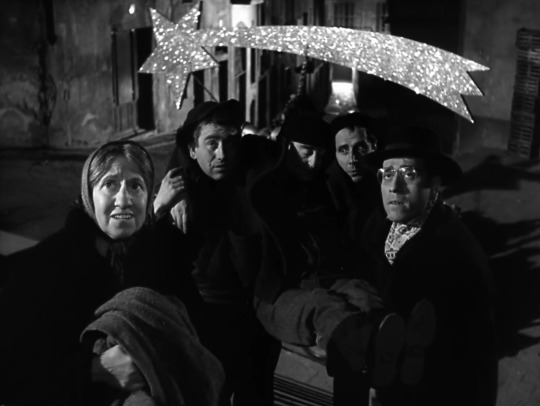


Plácido Luis García Berlanga. 1961
Church Carrer de l'Era del Firmat, 1, 08241 Manresa, Barcelona, Spain See in map
See in imdb
#luis garcía berlanga#placido#cassen#josé luis lópez vázquez#manuel alexandre#elvira quintillá#amelia de la torre#manresa#catalonia#spain#church#bages#star#movie#cinema#film#location#google maps#street view#1961
13 notes
·
View notes
Photo

Recommendation of the week: Plácido (1961)
Dir.: Luis García Berlanga
Cast: Cassen, José Luis López Vázquez, Elvira Quintilla, Amelia de la Torre, Julia Caba Alba.
Genre: Comedy
Plot: In a small spanish town, a group of old ladies decide to celebrate Christmas Eve with a “Sit a poor man at your table” dinner: each wealthy household of the town will have a homeless person dining with them that night. The celebrations also include a parade, and in it we find Plácido, the humble owner of a three-wheeler, whose family is forced to live in a public lavatory because of the lack of money to pay the rent, and who has to pay the second bill of his vehicle before midnight or else he will lose it.
Filmphilics score: 8'5/10
Merry Christmas 🎅
#plácido#placido#luis garcía berlanga#cassen#jose luis lopez vazquez#elvira quintanilla#amelia de la torre#julia caba alba#comedy#comedy film#comedy movie#christmas films#christmas movies#christmas cinema#cult cinema#cult film#cult movies#movie#film
5 notes
·
View notes
Photo




6.08.2021
1 note
·
View note
Text
Amelia y los Folch históricos
Cuando estuve revisando información para el post del tema de Amelia y Enriqueta Martí, pues vi que la prisión donde murió Enriqueta, la cárcel Reina Amalia, estuvo en el lugar que es actualmente el parque Josep María Folch i Torres. Y me puse a indagar sobre esa persona Sobre Folch i Torres era un escritor barcelonés nacido en 1880. Si os interesa aquí adjunto un retrato de él que dibujo Pablo Picasso.
Y después me puse a buscar cosas de él o de algún familiar y descubrí el árbol genealógico de la familia Folch i Torres y algunas cosas más.


Los padres de Josep se llamaban Lluís Folch i Brossa y Lluïsa Torres i Llinàs. Por lo que he mirado, Lluis Folch i Brossa tenía un hermano llamado Josep María, y por lo que he encontrado una página de internet su padre llamaba Bernat Folch i Franquès, aunque se sabe muy poco de él. Lluís Folch i Brossa al parecer era un anticuario o un ebanista industrial de muebles de lujo o algo así.Y aunque este "registrado" que el padre de Lluís, pues yo me he montado un headcanon de que la familia Folch i Torres son parientes cercanos de Amelia, porque Lluís Folch i Brossa es hijo de Pere.
Si seguimos con la línea de que Lluis es hijo de Pere Folch, a lo mejor podríamos buscar una explicación de que tras lo sucedido con el atentado contra el rey en 1881, sus hijos, para desvincularse a ellos y a su familia de lo que había hecho su padre, le "borraran" de la familia, diciendo que su padre era ese tal Bernat Folch i Franquès.

Por lo que he podido encontrar los hermanos Folch i Torres eran intelectuales y escribian y trabajaban en varios ámbitos de literatura y arte, principalmente, así que por lo que sabemos ninguno de ellos se dedicó a cosas de empresarios ni nada de fábricas. Bueno no sabemos exactamente que hacia Mercè, pero supongo que por el ambiente que tenía en casa ella tenía interés en literatura o arte.
Supongo que la faceta empresarial de la familia la tendría algunos de sus hijos o descendientes u otras ramas de la familia o familiares cercanos como Enric, Pere y Amelia.
Probablemente no hayan tenido necesidad o verdadero interés por cosas de negocios y tenían mayores intereses en cosas de literatura, y fueron decidiendo dedicarse a eso, porque otros de la familia ya se han estado dedicando a trabajar en cosas de negocios. Para empezar su padre Lluís, que es un empresario, y probablemente haya ganado bastante dinero por si mismo, y sus hijos para la década de 1880 o están por nacer o son niños pequeños.
Y si suponemos que Pere es abuelo de los hermanos Folch i Torres, pues la otra parte de la familia se ocupa del tema de los negocios y la fábrica, aunque a parte de ser empresaria, también se dedique a estudiar cosas de literatura e historia, a lo mejor si tienen un contacto cercano con la familia de su primo, podría ser que Amelia les haya influenciado en lo de interesarse en la literatura y el arte.

Otras curiosidades en relación a los Folch, es que hay dos lugares que se llaman Can Folch, el primero es una casa que tenían los Folch i Torres en un pueblo de la provincia de Barcelona, Palau-solità i Plegamans, que aparece en varias de las fotos de la familia. Si os interesan, las he archivado en una carpeta de Google Drive, cuyo enlace encontraréis al final de esta publicación.

El segundo es una fábrica que se ubicaba en la actual zona de la Villa Olímpica de la ciudad de Barcelona, y que se abrió en 1882. Actualmente de la fábrica sólo queda una de las chimeneas.



La fábrica de Can Folch era de harinas, sémola, hielo y alcohol, así que creo que ya sé que contenía la lista que le dio Salvador a Amelia sobre en cuales son las mejores cosas en las que invertir después de lo que pasó en el capítulo de Tiempo de esclavos.
Can Folch

Uno de las imágenes que hay en la carpeta de Drive que he adjuntado, es un grabado de una de la sala de máquinas de Can Folch en 1883. Luego hay otra otra imagen que he encontrado, en la que hacen referencia a una zona de la fábrica de hielo de los hermanos Folch en 1919. Y otras son unas fotografías de los restos de la fábrica en 1987, antes y después de ser demolida para renodelar la zona para adaptarla a la Villa Olímpica para los Juegos Olímpicos de Barcelona de 1992.

*Amelia de visita por la Barcelona del siglo XXI, mirando a ver si queda algo en pie, su casa o algo y se planta en Villa Olímpica y ve la chimenea de su fábrica en medio de esos pisos*
Amelia: Bueno al menos han dejado la chimenea como recuerdo.
Carpeta de fotos
#el ministerio del tiempo#emdt#mdt#siglo xix#siglo xx#barcelona#fundació folch i torres#can folch#palau-solità i plegamans#amelia folch#josep maria folch i torres#enric folch#headcanons#pere folch#Lluís Folch i Brossa#Lluïsa Torres i Llinàs#Manuel Folch i Torres#Lluís Folch i Torres#Mercè Folch i Torres#Ignasi Folch i Torres#Joaquim Folch i Torres#Maria Luandra Vilargunté#Isabel Camarasa Serra#Maria Camarasa Serra#Orsina Baget Tarrés#Antònia Sancristòfol Arboix#Frederic León Luque#Lluís Folch i Camarasa#Jordi Folch i Luandra#Maria Rosa Folch i Camarasa
20 notes
·
View notes
Text
Shalim Ortiz
Amaury Nolasco, Adam Kaufman (5’11” range), Julie Benz, Leeann Tweeden, Roselyn Sanchez, Poppy Montgomery, Charytin & Eric Winter

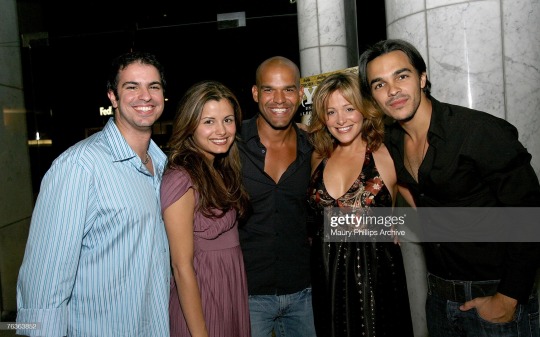
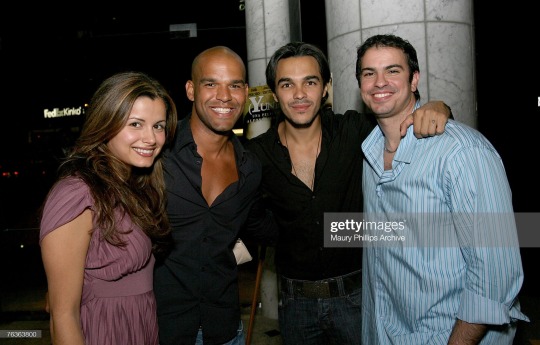
Ana Ortiz
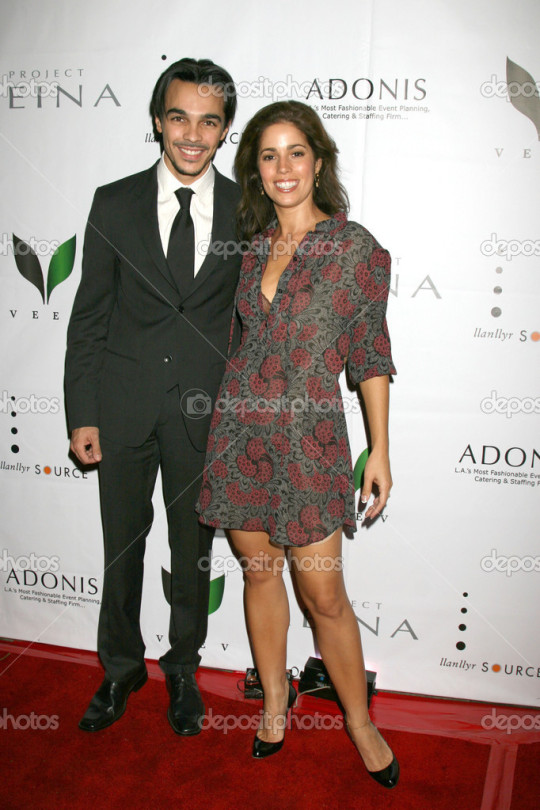
Bryan Craig


Carmen Electra
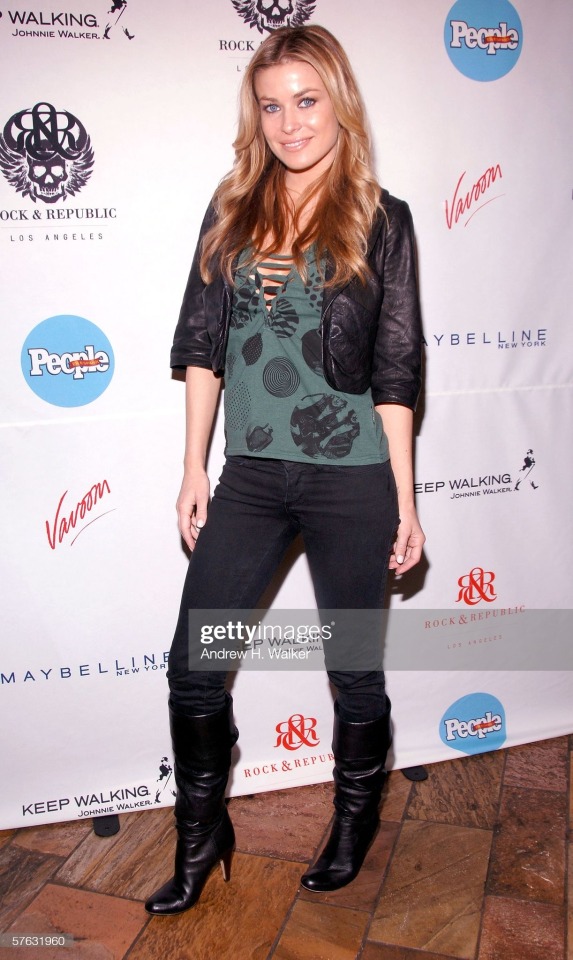
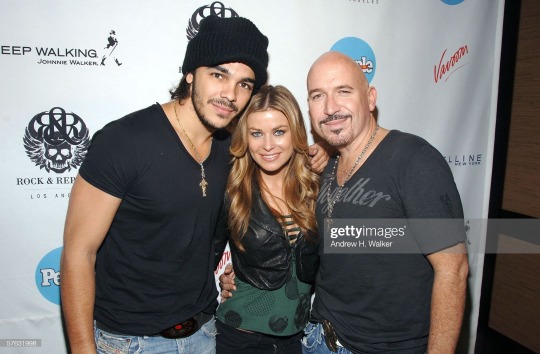
Christopher Masterson and Brooke Burns
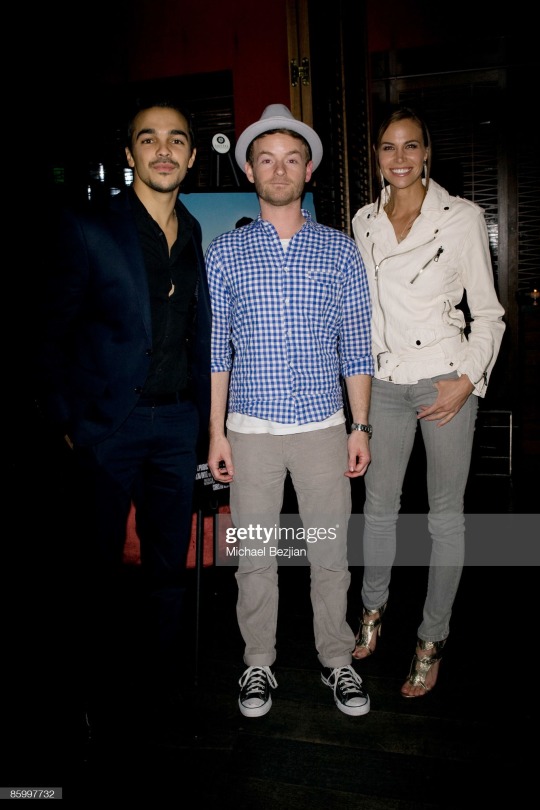
Denise Vasi
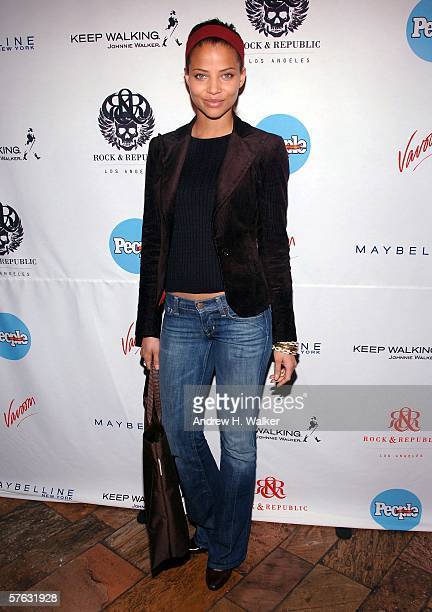


Diego Boneta

Eric Winter


Eva Longoria

Jamie Lynn Sigler
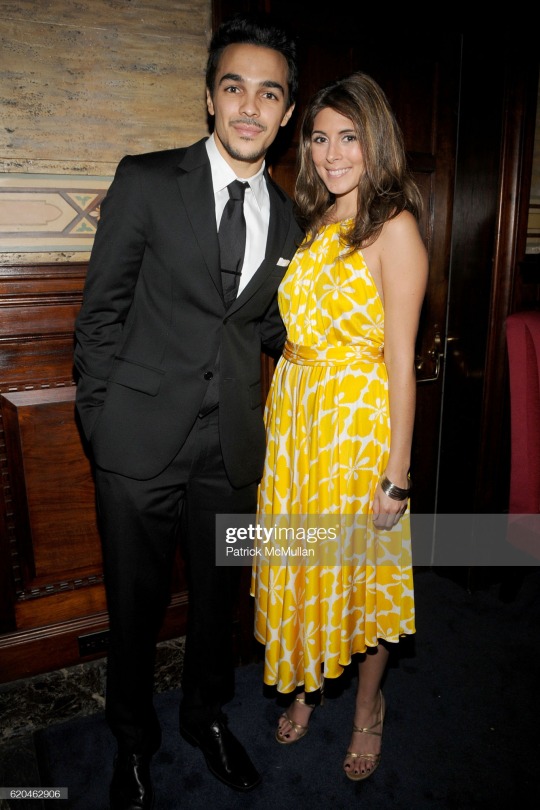
Kuno Becker


Wilmer Valderrama
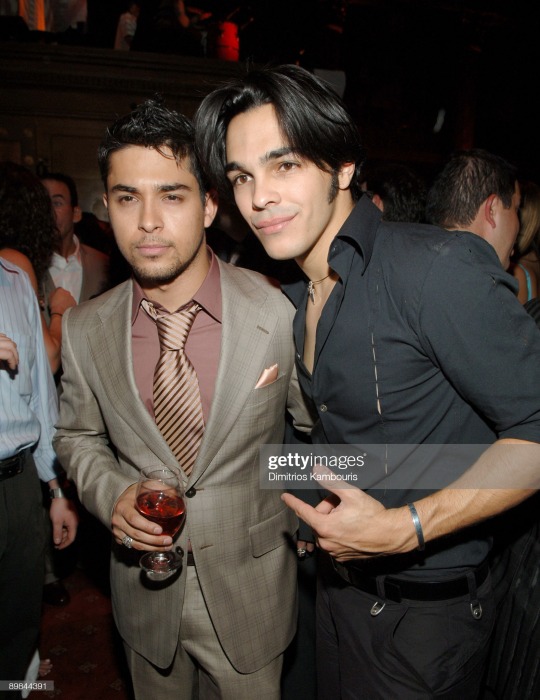
Zoe Saldana


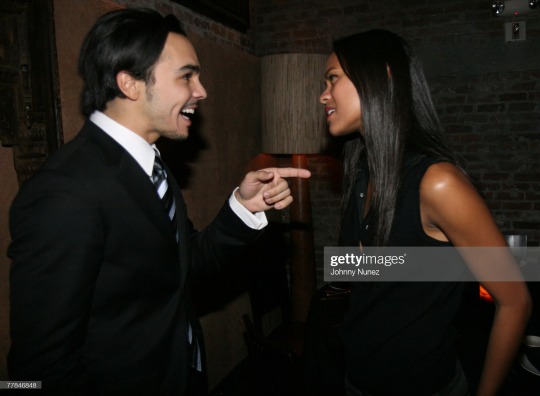
Adrian Di Monte (Listed 179cm)

Alexander Elin Goyco (5'10" tops)


Alfredo Ahnert (Listed 5’9”)

Amelia Vega (Listed 6'0")


Bryan Craig, Denyse Tontz, Damien Bichir, Roselyn Sánchez & Lincoln Younes (Listed 6’1”)



Cesar Camacho (Listed 5’10”)

Davi Santos (Listed 6'0")

Emilio Estefan (5'10" tops)

Fabian Rios (Listed 182cm)



Fernando Carillo (5'11" tops)
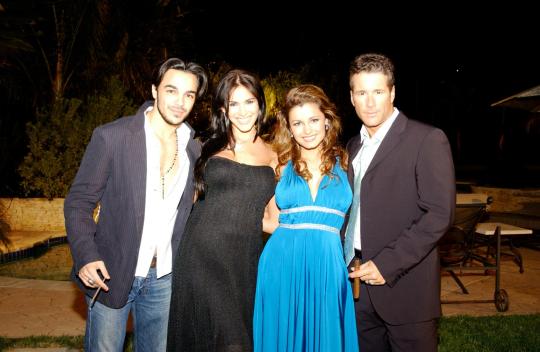
Gaby Espino & Luis Ernesto Franco (Both Listed 5’9”)



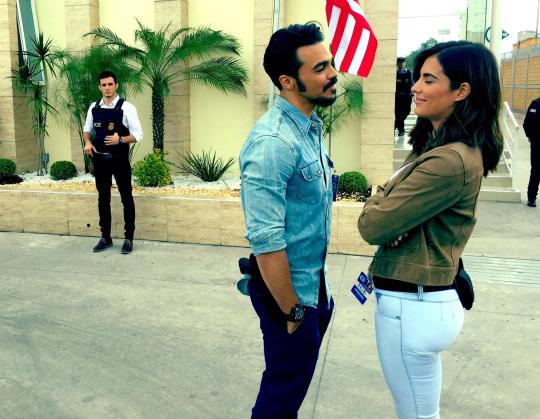


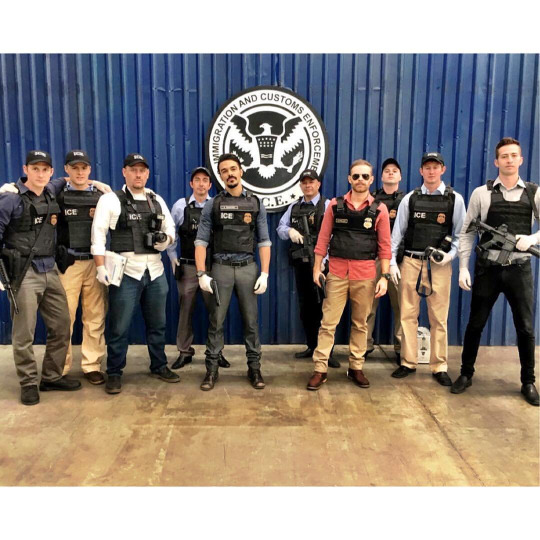

HANNAH BROWN & LINCOLN YOUNES (Listed 6'1")

Héctor Aníbal (Listed 6’0”), Carlos de la Mota (Listed 187cm) & José Guillermo Cortines (Listed 5’11”)

Jon Secada (5'8.5" tops)

Lili Estefan (Listed 5’9”)

Lincoln Palomeque (Listed 177cm)

Lincoln Younes (Listed 6'1")
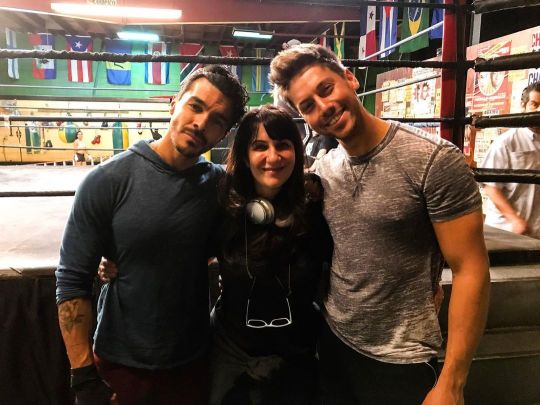

Manolo Cardona (Listed 6’-6’1”)
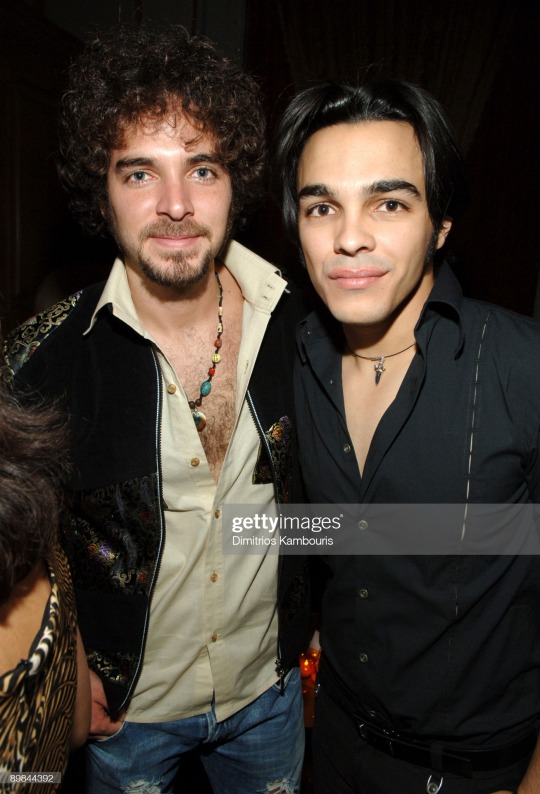
Oscar Torre (Listed 176cm)

Rafael Amaya (Listed 6’2”)

Raul Mendes (Listed 5’9”)

Ricky Josué (Listed 5'7")

Seniesa Estrada (Listed 5’2”) & Ilia Calderon (Listed 5’8”)

Sharinna Ortiz (Listed 5'6")
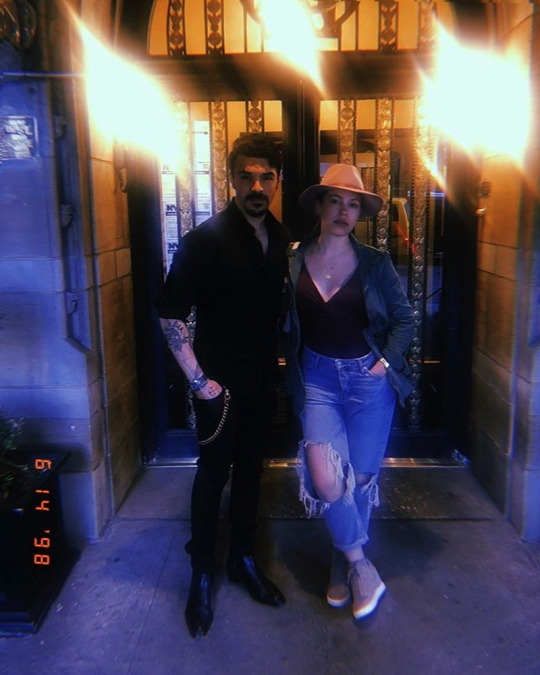
Shary Allan (Listed 167cm)

Shirly Brener (5'4" tops)
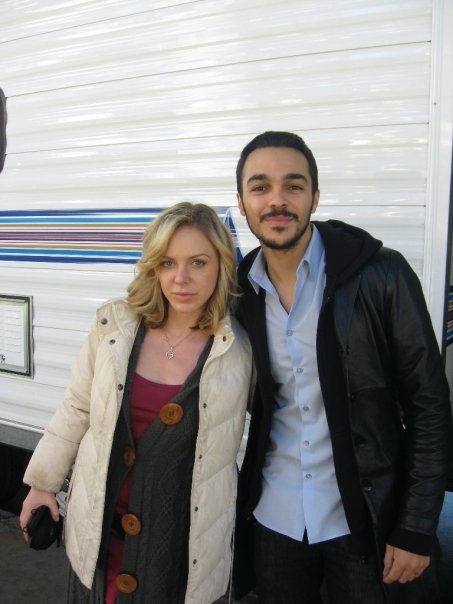
3 notes
·
View notes
Text
Conozca los postulados a rectores del CNE (+Listado)

Los nombre de los 75 postulados y postuladas a rectores y rectoras del Consejo Nacional Electoral (CNE) que pasaron la etapa de evaluación realizada por el Comité de Postulaciones Electorales, fueron dados a conocer por el Comité de Postulaciones Electorales de la Asamblea Nacional (AN).
El Comité informó que de las 75 postulaciones que superaron esta etapa, 47 pertenecen a la sociedad civil, 10 a las universidades y 18 al Poder Ciudadano, cumpliendo así con el artículo 26 de la Ley Orgánica del Poder Electoral.
A continuación el listado
Candidatos postulados por las facultades de Ciencia Jurídicas y Políticas de las Universidades:
5.424.288 HAROLD ELISEO ALBORNOZ TORREALBA 8.789.248 CARMEN ALVAREZ CABEZA 9.363.630 ANGEL ZULEY ANTUNEZ PEREZ 13.748.998 WILSON GOMEZ GUEVARA 4.767.120 ALEJANDRO JOSE UGARTE SPERANDIO
7.726.798 PEDRO ALBERTO ISEA GONZALEZ 7.275.591 JOSE RAMON MUÑOZ MONTILLA 11.469.855 LILIMAR JOSEFINA ROJAS DAVILA 4.793.004 LERMIT JOSE ROSELL PUCHE 12.630.557 MICHELY ALEXANDRA VIVAS CHACON
Candidatos postulados por el Poder Ciudadano:
4.596.507 FRANCISCO GUSTAVO AMONI VELASQUEZ 10.815.608 ODALIS YANETTE ARTEAGA PEÑA 9.683.971 ALFREDO GERMAN BAPTISTA OVIEDO 9.652.930 REINALDO ENRIQUE CARVALLO MACHADO 7.959.098 JULIO ANTONIO DUNO OLIVEROS 11.199.471 MANUEL JOSE ESCAURIZA SANCHEZ 6.730.853 WILLIAM JOSE FERNANDEZ RANGEL 12.061.089 AURA ROSA HERNANDEZ MORENO 6.492.846 CELESTE JOSEFINA LIENDO LIENDO
11.785.927 DOMINGO MEDINA GUTIERREZ 14.316.687 ANTONIO JOSE MENESES RODRIGUEZ 18.094.872 LEONEL ENRIQUE PARICA HERNANDEZ 10.948.762 ESTHELA MARIA RINCONES 17.799.433 EBENEZER DAVID RIVERA BRAZAO 9.640.547 SHEILA YUBIRY ROMERO GONZALEZ 6.836.622 CARMEN ALIDA VIGIL BENCOMO 6.297.704 GUSTAVO ADOLFO VIZCAINO GIL 11.957.784 CARLOS EDUARDO ZAMBRANO GELVES
Postulados por las Organizaciones de la Sociedad:
14.017.686 HELEN DAYANA AGUIAR HERNANDEZ 14.306.972 AMELIA ESTHER ALTER PINO 7.659.795 ELVIS HIDROBO AMOROSO 4.506.504 LEON ANTONIO ARISMENDI ANUEL 11.159.050 ESTEBAN STEVE ARVELO RUIZ 4.077.208 SAUL DE JESUS BERNAL PEÑA 4.248.113 OSCAR BRAULIO BRAVO GUARAMATO 10.886.311 GRISELDA VANITI COLINA HIBIRMA 11.691.429 TANIA DE AMELIO CARDIET 5.962.704 JUAN CARLOS DEL PINO 3.187.497 DAVID DELGADO ITURRIZA 13.339.266 ANA PAULA DINIZ SANTOS 5.217.642 WUILLIAM FERNANDEZ FUENMAYOR 5.524.394 CARMEN LUCRECIA GONZALEZ CORONEL 12.731.271 EUGENIO GONZALEZ MARTINEZ 4.132.092 ALFONSO GRANADILLO MALAVE 17.375.543 JHONNY ALEXIS GUERRERO CASTILLO 12.248.860 GABRIEL GREGORIO GUERRERO GIL 8.967.366 DICHELIS JOSEFINA GUEVARA 1.567.695 JOSE ALONSO GUEVARA GUERRA 7.048.576 JOSE LUIS GUTIERREZ PARRA 3.180.027 LUIS ENRIQUE LANDER LARRALDE 14.533.009 CIRO VLADIMIR LEON 16.288.462 AMANDA CORINA LUCCI ROYE
7.528.966 NOEL YORELBE MABARES 7.761.966 FRANCISCO JOSE MARTINEZ GARCIA 7.950.191 LADYS COROMOTO MEJIAS ROJAS 3.750.465 BERNARDO MENDEZ ACOSTA 3.552.194 CELIZ RAMON MENDOZA 4.771.335 LEONARDO ENRIQUE MORALES POLEO 6.094.547 JOEL GUSTAVO OLOYOLA CARRASQUEL 4.505.818 JOSE ENRIQUE PARRA MAURERA 3.927.576 EURO DE JESUS PARRA MONTIEL 4.323.185 CONRADO RAMON PEREZ BRICEÑO 12.095.154 ANIBAL JOSE PERNIA CONTRERAS 6.560.218 ROBERTO ANTONIO PICON HERRERA 10.719.241 CARLOS ENRIQUE QUINTERO CUEVAS 4.271.137 TULIO ALFONSO RAMIREZ CUICAS 14.143.740 ROSMERY GERALDINE RAMIREZ DIAZ 10.451.000 ROBINSON RIVAS SUAREZ 11.657.235 AQUILINO ANTONIO RODRIGUEZ GARCIA 13.970.262 DENNY ALEXANDER RUIZ FARFAN 12.839.942 YVAN JOSE SALCEDO UZCATEGUI 12.950.777 MAYGRET DEL MILAGRO SANCHEZ BARRERA 6.671.155 JHOVANY SEVILLA GASPAR 13.875.503 JUAN JOSE TORRES LARA 12.014.259 JOE PONCE UZCATEGUI GONZALEZ
Cabe destacar que este miércoles, el vicepresidente del Comité de Postulaciones Electorales, diputado José Gregorio Correa, precisó que la lista con los nombres de los venezolanos seleccionados como elegibles se podrá impugnar durante 6 días, quienes tendrán ese mismo tiempo para hacer los descargos de las objeciones.
El Consejo Nacional Electoral está integrado por cinco (5) miembros, denominados Rectoras o Rectores Electorales, cuyo periodo de ejercicio en sus funciones es de siete (7) años. Son designadas o designados por la Asamblea Nacional con el voto favorable de las dos terceras partes de sus integrantes y podrán ser reelegidas o reelegidos en sus cargos hasta un máximo de dos (2) periodos adicionales, previa evaluación de su gestión por parte de la Asamblea Nacional.
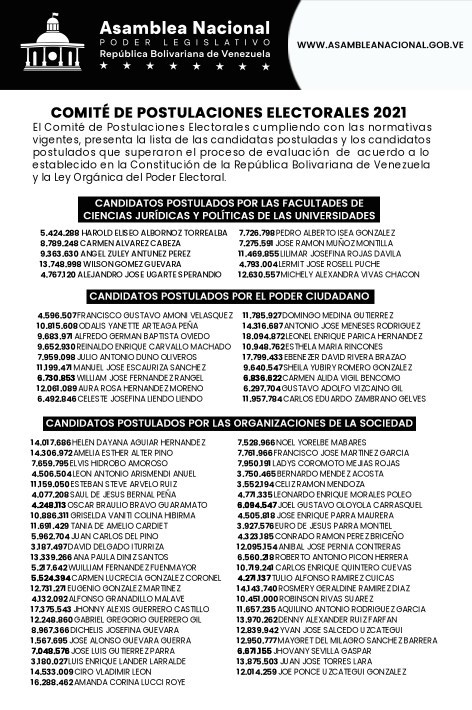
2 notes
·
View notes
Text
El sol apenas comenzaba a despuntar en el horizonte cuando el Group of Light inició su marcha hacia una nueva aventura. La luz tenue de la mañana bañaba el paisaje, con los árboles del bosque arrojando sombras largas sobre el suelo y el viento susurrando entre las hojas. El grupo caminaba en silencio, con una mezcla de expectativa y tranquilidad, conscientes de que el día traería desafíos que aún desconocían.
Fre4k iba al frente, como de costumbre, con la espada mágica descansando sobre su espalda. El aire fresco le traía recuerdos vagos de tiempos pasados, pero ya no se aferraba a esos pensamientos como antes. Alan era solo un eco lejano. Ahora, era Fre4k, el líder de un equipo de aventureros fuertes y leales. Detrás de él, Hank caminaba con su usual actitud relajada, lanzando pequeñas chispas de fuego con sus dedos, distraídamente entretenido mientras su visor mostraba un emoticono perezoso. Hope, con su porte divino, avanzaba junto a ellos, sus grandes alas de ángel agitándose suavemente a cada paso, mientras Amelia caminaba a su lado, su cuerpo zombie moviéndose con sorprendente agilidad y gracia.
—Entonces, ¿a dónde nos dirigimos hoy? —preguntó Amelia con una sonrisa traviesa, mientras lanzaba una mirada rápida a Fre4k—. ¿Monstruos gigantes? ¿Ruinas malditas? ¿O algo más interesante?
Fre4k lanzó una sonrisa despreocupada por encima del hombro.
—Un poco de todo, espero —respondió, su tono sarcástico—. Pero según lo que escuchamos en la última ciudad, hay una fortaleza antigua no muy lejos de aquí. Abandonada durante siglos. Dicen que hay tesoros… y que está maldita.
Hank dejó escapar un leve bufido, sus manos creando pequeñas llamas danzantes.
—¿Tesoros malditos? —repitió, claramente divertido—. ¿Qué podría salir mal?
—Lo de siempre —respondió Amelia con una sonrisa pícara—. Nos enfrentamos a hordas de criaturas demoníacas, casi morimos, y luego Fre4k da el golpe final.
—Por supuesto —dijo Fre4k con una carcajada—. Y mientras tanto, Hank quema todo a nuestro alrededor y tú te aseguras de que no nos maten en el proceso.
Amelia levantó los hombros con fingida modestia.
—Es un trabajo sucio, pero alguien tiene que hacerlo.
Hope, quien había estado caminando en silencio, observando el intercambio con una sonrisa tranquila, decidió intervenir.
—No subestimemos lo que pueda haber en esa fortaleza —dijo con su voz serena—. A veces, las historias de maldiciones y tesoros son más que meras leyendas.
—Oh, vamos, Hope, no me digas que crees en esas cosas —replicó Hank, aunque su tono era más juguetón que escéptico.
Hope se detuvo un momento, mirando a Hank con una sonrisa enigmática.
—He visto lo suficiente en este mundo como para saber que a veces las leyendas tienen más verdad de la que quisiéramos admitir —respondió suavemente.
Hank asintió lentamente, aparentemente considerando las palabras de Hope. Aunque siempre tenía una actitud relajada y burlona, sabía que la diosa de la armonía rara vez decía algo sin razón.
Tras varias horas de caminata, llegaron a una colina que les ofrecía una vista panorámica de su destino: una antigua fortaleza en ruinas, medio oculta por la espesura del bosque. Las torres derrumbadas se alzaban como dedos esqueléticos hacia el cielo, y las paredes, aunque desgastadas por el tiempo, aún mantenían un aura de imponente poder. El lugar estaba cubierto por una niebla espesa que le daba un aire sombrío y misterioso.
—Ahí está —dijo Fre4k, observando las ruinas con una mezcla de emoción y cautela—. No se ve muy amigable.
—Se ve como si no hubiera visto a nadie en siglos —comentó Amelia mientras ajustaba su ropa con un gesto casual—. Lo que probablemente significa que no hay nadie para oponerse a que entremos y reclamemos lo que es nuestro.
—O puede que algo nos esté esperando dentro —dijo Hope, su voz suave pero firme, mirando el lugar con ojos que parecían ver más allá de lo visible.
Fre4k sacó su espada de su funda, el metal brillando con una energía propia.
—Solo hay una forma de averiguarlo —dijo con una sonrisa—. Vamos.
El grupo avanzó hacia la fortaleza, pisando el suelo blando y cubierto de musgo que crujía bajo sus botas. A medida que se acercaban, el ambiente a su alrededor parecía volverse más denso, como si el aire mismo estuviera cargado de una energía oscura y antigua.
Amelia fue la primera en sentirlo.
—Hay algo… raro en este lugar —dijo, su voz más seria de lo habitual—. Puedo sentirlo en mi piel, como si algo me estuviera observando.
Fre4k se tensó ligeramente, sus ojos recorriendo el entorno. El bosque a su alrededor parecía cada vez más cerrado, y el silencio que los rodeaba se volvía opresivo. Incluso los habituales sonidos de los pájaros y animales habían desaparecido por completo.
—Manténganse alerta —advirtió Fre4k, levantando su espada y adelantándose un poco—. Esto podría ponerse feo rápidamente.
Entraron en la fortaleza a través de un portón de madera podrida que cedió fácilmente ante el empuje de Fre4k. El interior era aún más lúgubre que el exterior. Los pasillos estaban oscuros, con paredes cubiertas de enredaderas que parecían moverse ligeramente, como si estuvieran vivas. El aire olía a humedad y a algo más… algo antiguo y podrido.
Hank fue el primero en hablar, su voz resonando en el eco del lugar.
—Es oficial. Este lugar es absolutamente horrible —dijo mientras su visor proyectaba una imagen de una cara de disgusto.
Amelia soltó una risita, pero incluso ella parecía más alerta de lo habitual.
—¿Qué esperabas? —dijo—. Un castillo de cuentos de hadas con flores y duendes felices.
—Bueno, no es mucho pedir, ¿no? —respondió Hank, encogiéndose de hombros mientras lanzaba una pequeña llama al aire para iluminar el camino frente a ellos.
Hope caminaba justo detrás de ellos, sus alas plegadas con elegancia a su espalda, pero sus ojos escaneaban cada rincón oscuro.
—La oscuridad aquí es densa… hay magia en el aire —murmuró.
De repente, un sonido agudo cortó el silencio: un gruñido bajo, gutural, que resonó por los pasillos oscuros. Fre4k se detuvo en seco, su espada lista en un instante.
—Prepárense —dijo, su voz baja pero llena de autoridad—. No estamos solos.
Y entonces, las sombras alrededor de ellos cobraron vida.
De entre las paredes y los suelos, criaturas oscuras comenzaron a emerger. Sus formas eran amorfas, sombras encapuchadas con garras largas y ojos brillantes que destellaban en la penumbra. Sus movimientos eran rápidos y silenciosos, y en cuestión de segundos, los rodearon.
Hank fue el primero en reaccionar, levantando su báculo y lanzando una explosión de fuego que iluminó el oscuro pasillo. Las llamas devoraron a varias de las criaturas, pero otras surgieron en su lugar, avanzando sin cesar.
—¡Maldita sea! —gritó Hank, retrocediendo mientras lanzaba otra ráfaga de fuego—. ¡Son demasiados!
Amelia, con su agilidad sobrehumana, se lanzó hacia adelante, esquivando y atacando a las criaturas con movimientos rápidos. Sus cuchillos destellaban en el aire, cortando a través de las sombras, pero estas seguían multiplicándose.
—No importa cuántos derribemos, siguen viniendo —dijo entre dientes, su voz tensa pero sin rastro de miedo.
Hope, desplegando sus alas, invocó una barrera de luz que rodeó al grupo, protegiéndolos momentáneamente del ataque de las sombras.
—Estas criaturas están conectadas con la magia oscura de este lugar —dijo, su voz calmada pero decidida—. No podemos vencerlas solo con fuerza bruta. Hay que encontrar la fuente.
Fre4k asintió, sus ojos recorriendo el lugar mientras bloqueaba los ataques con su espada.
—Bien, entonces nos abrimos camino hasta la fuente —dijo, su tono decidido—. ¡Vamos!
Con la dirección clara, el grupo comenzó a moverse a través de la fortaleza, abriéndose paso entre las sombras, que parecían infinitas.
0 notes
Photo

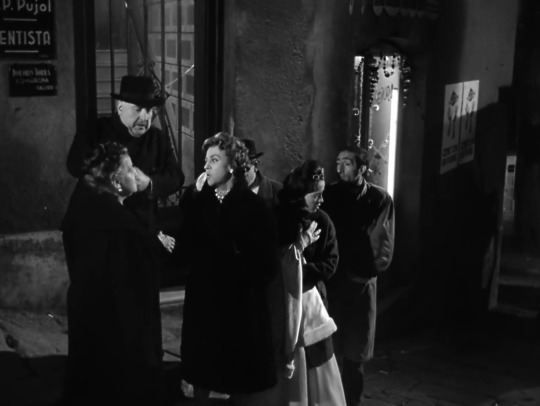
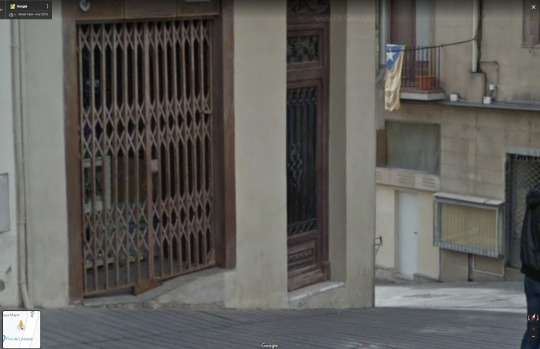


Plácido Luis García Berlanga. 1961
House C. de Monistrolet, 4, 08241 Manresa, Barcelona, Spain See in map
See in imdb
#luis garcía berlanga#placido#luis ciges#star#christmas#spain#cassen#elvira quintillá#josé luis lópez vázquez#amelia de la torre#laura granados#xan das bolas#manresa#bages#catalonia#movie#cinema#film#location#google maps#street view#1961
9 notes
·
View notes
Text
Se realiza en NUQLEO consulta nacional sobre biodiversidad

Con el fin de hacer conciencia y escuchar la voz de la población joven en relación con temas medioambientales, se llevó a cabo en las instalaciones de Nuqleo la Consulta Nacional Jóvenes de México por la Biodiversidad, ejercicio en el que la Secretaría de la Juventud (SEJUVE), es coorganizadora. Durante el inicio de los trabajos, el secretario de la SEJUVE, Rodrigo Ruiz Ballesteros, resaltó que la agenda verde es también la agenda de los jóvenes. “Estoy seguro que a través de este ejercicio mandaremos un claro mensaje: que en Querétaro la biodiversidad es una prioridad”, afirmó.

El funcionario planteó que la pérdida de la biodiversidad se ubica como uno de los mayores retos a nivel mundial, pues de 1970 a la fecha ha desaparecido más de 60% de la población de especies en todo el planeta. “Este debe ser uno de los temas de mayor atención para México, pues somos uno de los 17 países con mayor biodiversidad a nivel mundial”, dijo. Ruiz Ballesteros consideró importante que desde la juventud se posicione esta agenda y que la misma se traduzca en redes de colaboración y en estrategias de acción. En este sentido, recordó que desde la SEJUVE se busca posicionar a Nuqleo como un espacio de colaboración y de innovación abierta, desde el cual se pueda potenciar la voz y propuestas de todos los jóvenes.

Durante la consulta se llevó a cabo un ejercicio de encuesta y mesas de trabajo en las que participaron las secretarías de Desarrollo Sustentable (SEDESU) y de Desarrollo Agropecuario (SEDEA). Ricardo Torres, subsecretario de Medio Ambiente de la SEDESU, destacó que las nuevas generaciones tienen en sus manos el poder de hacer un cambio y de tomar decisiones con conciencia ante los problemas ambientales. “A esta generación le toca hacer un esfuerzo para alcanzar la meta de descarbonización. En Querétaro se han fortalecido las áreas naturales protegidas, se cuenta con fondos estatales enfocados al medio ambiente y se preserva la reserva de la biósfera de la Sierra”, sostuvo. En su oportunidad, Edgar Muñoz, representante de la SEDEA, refirió que desde esta dependencia se promueve una ganadería sustentable que haga un uso racional de los recursos naturales. Durante el evento se contó con la presencia de Amelia Arreguín Prado, representante de la Red Global de Jóvenes por la Biodiversidad.
#QuerétaroResponsable#QroResponsable#Querétaro#Nuqleo#Nacional#Biodiversidad#Sejuve#RodrigoRuíz#Planeta#Sedesu#MDelPrete
1 note
·
View note
Text
Elite 4 members:-
Name: Elaine Smith
Age: 21
Date of birth: 17th February
Relationship status: single
Languages spoken: English, chinese, french, italian, hindi etc..
Eye colour: black
Skin colour: white
Hair colour:brownish black
Hair style: straight wavy
Typical clothing: black colored costumes mostly
Likes: Dancing, Fighting, Archery, Designing, annoying her friends, sleep, watching k drama etc...
Dislikes: anyone who hurt her and her friends
Education: student at mingde university
Fears: patriarchical father
Parents: William Smith And Amelia Smith
Siblings: Elira and Eliza
Friends: Dove Cameron, Sophia Carson
Celebrity who has crush on her:- Alan Walker
Best friend(s): Elite 4
Important friends:F4
Love interest:- no
Occupation: Dancer, Designer
Awards:- world Famous youngest Dancer, worn awards for dancing like National Dance Awards, Helpmann Awards, Selma Jeanne Cohen Award, Gertrude Lippincott Award, De la Torre Bueno Prize, The Dance Awards etc...


Current home: Elite 4 house
Pets: Diamond
Talents: Fighting, Dancing, weapons
Favourite colours: black
0 notes
Text
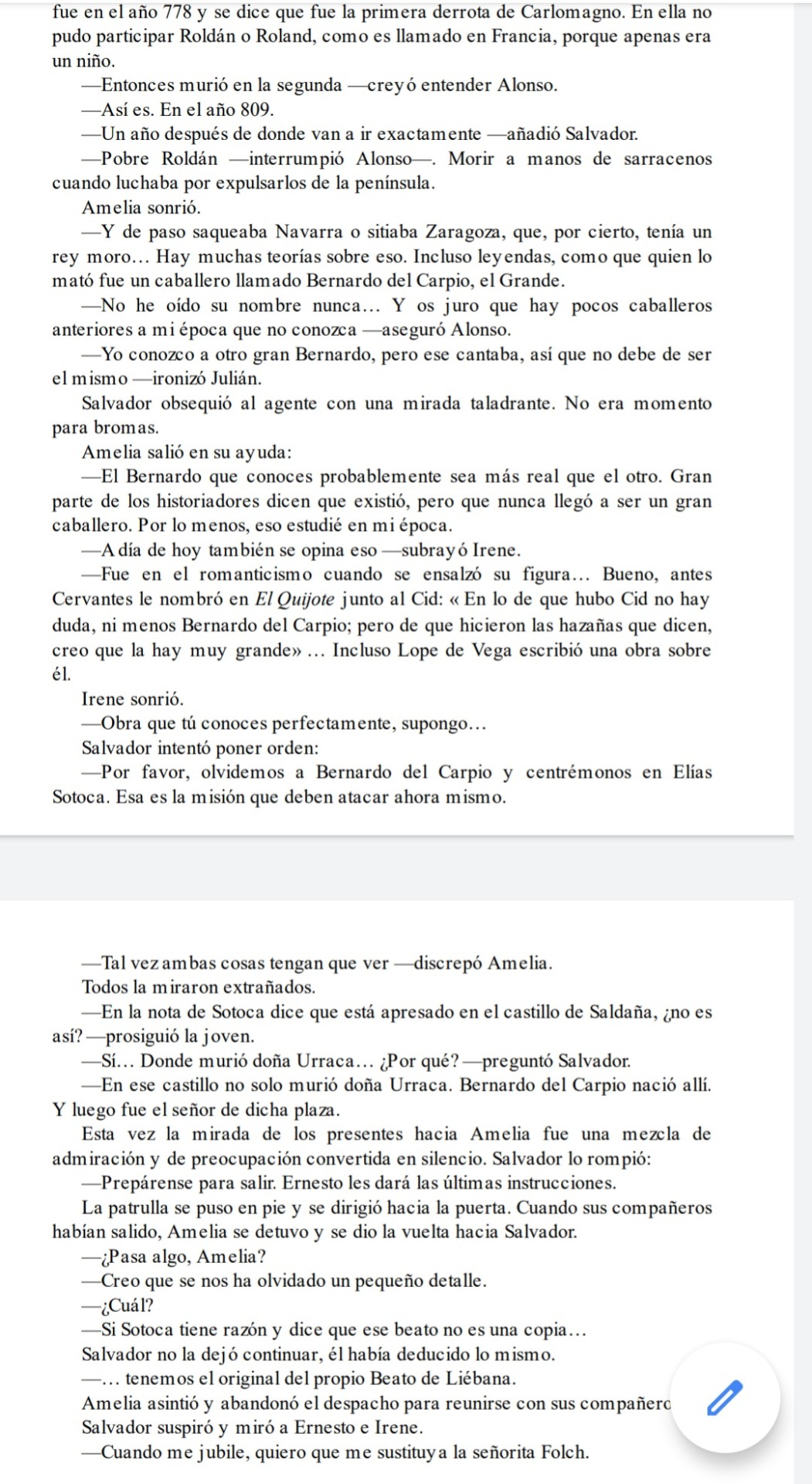

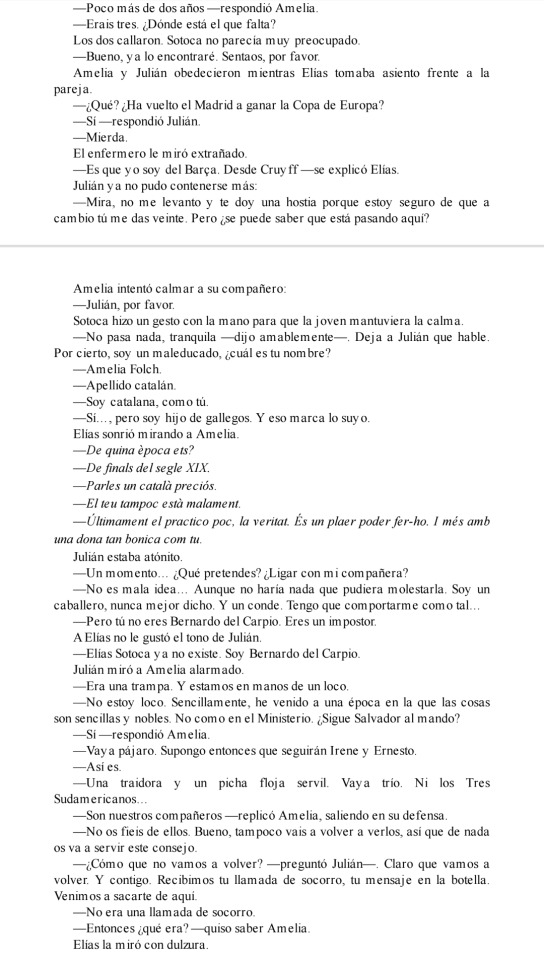
Las mocedades de Bernardo del Carpio, El casamiento en la muerte, Hechos de Bernardo del Carpio...
Si definitivamente Amelia se debe conocer de pe a pa la figura de Bernardo del Carpio solo con leer las obras que le dedicó Lope de Vega.
Principalmente porque Lope tenía gran interés en Bernardo por tener el el mismo apellido e incluso se llegó a plantear si tendría algún parentesco con el héroe, siendo el segundo apellido de Lope, Carpio, y en una de sus obras, La Arcadia aparece un grabado del atribuido escudo del Carpio, con 19 torres, bajo el retrato de Lope, principalmente después de su visita al Castillo del Carpio en Villagonzalo de Tormes (Salamanca)

Aunque pronto otros autores de la época se burlaron del tema del escudo y de alegar ser pariente de Bernardo, como Góngora con este poema:
Por tu vida, Lopillo, que me borres
Las diez y nueve torres del escudo,
Porque, aunque todas son de viento, dudo
Que tengas viento para tantas torres
¡Válgame los de Arcadia!
¿No te corres armar de un pavés noble a un pastor rudo?
¡Oh tronco de Micol, Nabal barbudo!
¡Oh brazos Leganeses y Vinorres!
No le dejéis en el blasón almena.
Vuelva a su oficio, y al rocín alado
en el teatro sáquenle los reznos.
No fabrique más torres sobre arena,
Si no es que ya, segunda vez casado,
Nos quiere hacer torres los torreznos.
#random#lope de vega#bernardo del carpio#el tiempo es el que es#novela#emdt#Félix Lope de Vega y Carpio#hechos de bernardo del carpio#las mocedades de bernardo del carpio#el casamiento en la muerte#la arcadia#mdt#luis de góngora y argote#el ministerio del tiempo
4 notes
·
View notes
